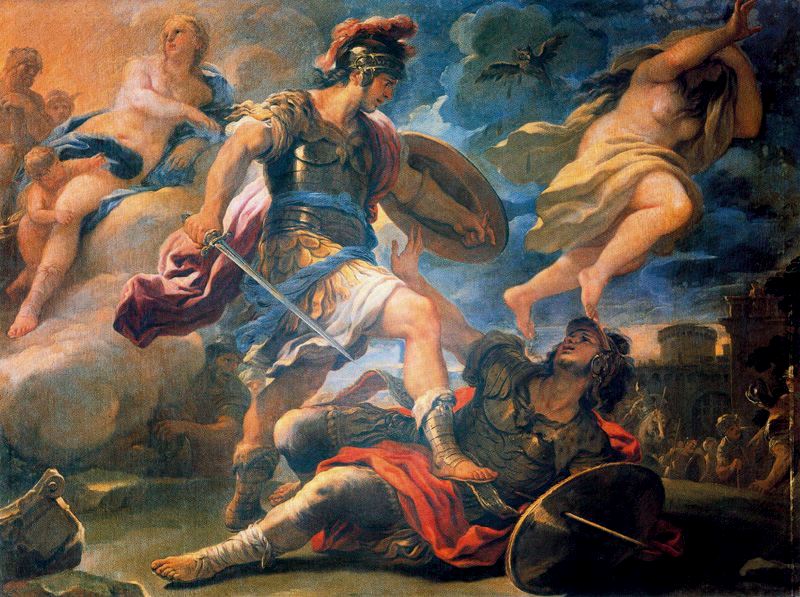Virgil, one of the great poets of his time, has had a profound impact on many writers over the past two millennia since his death. His epic poem, the Aeneid, is considered to be one of the most important pieces of classical literature (Mackail).
 |
| A bust of Virgil in Naples |
Virgil himself was influenced by the Greek poet Homer, and his works the Iliad and the Odyssey. The Aeneid is an epic poem that tells the story of Aeneas, a Trojan soldier who flees the city of Troy after it is destroyed by the Greeks during the Trojan War. Similar to the Odyssey, the Aeneid recounts “a series of Mediterranean adventures and an eventual homecoming, and is like the Iliad in recounting a war to capture a city,” (Cox).
However unlike Homer and many poets before him, Virgil could read and write. He didn’t hear the Homeric poems orally, he read them. This allowed him to consult Homer’s work while writing his own. Virgil chose to write his own story, based on Homer’s character of Aeneas, who was briefly described in the Iliad. He, like many Roman thinkers, adapted the philosophical ideas of the Greeks to apply to those of their own situation in the Roman republic and empire.
 |
| "Aeneas and Turnus" by Luca Giordano is a painting inspired by the work of Virgil. |
Soon after his death, his work was modelled by the poet Ovid. The writings of Virgil have been studied almost as long as the language of Latin itself. During the Middle Ages, many religious scholars interpreted his writings as Christian allegories, even though Virgil died decades before the idea of Christianity had even formed.
These religious interpretations caused the work of Virgil to become widespread during this time, and became a huge influence on the work of Dante Alighieri in the 14th century. For those unfamiliar, the Divine Comedy is an epic poem, written in first person, as Dante travels through Hell, Purgatory, and Paradise. Dante’s Divine Comedy is considered to be the most important piece of literature composed in the Italian language (Scott). Virgil is even included as a character in the Divine Comedy, as he guides Dante through Hell and Purgatory.
 |
| Depiction of Satan by Gustave Dore was inspired by Satan as description in Milton's Paradise Lost, which was greatly influenced by Virgil. |
During the Renaissance, Virgil’s work became the inspiration for John Milton’s Paradise Lost. Paradise Lost tells the story of the “Fall of Man”, as depicted in the Book of Genesis, the first book of the Old Testament. The Aeneid became the model for Paradise Lost in epic structure, but also writing style (Williams).
Though Virgil’s influence waned during the Romantic period, as it was believed he lacked the emotion and sensitivity that blossomed during the early 19th century, his popularity once again soared during the Victorian era. Even today, the writings of Virgil, and those who came after him, are still an enormous influence on writers and philosophers alike. I have made a timeline to demonstrate the evolution of writers that Virgil has inspired over the last two thousand years.
Sources:
Cox, John D. "Introduction to Virgil, The Aeneid."
Introduction to Virgil, The Aeneid. Hope College, n.d. Web. 12 Dec. 2014.
Mackail, J. W. Virgil and His Meaning to the World of To-day.
New York: Cooper Square, 1963. Print.
Scott, John A. Understanding Dante. Notre Dame, IN: U of
Notre Dame, 2004. Print.
Williams, Robert D. "Virgil." Britannica.
Encyclopedia Britannica, 8 Jan. 2014. Web. 12 Dec. 2014.









